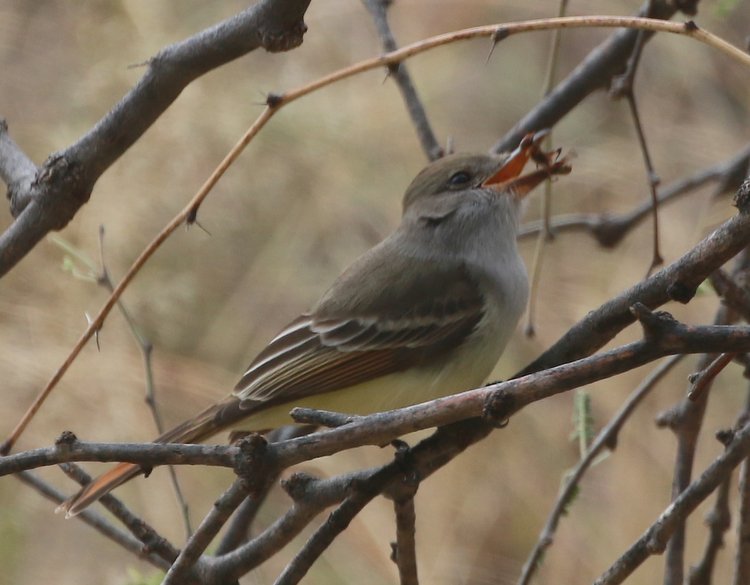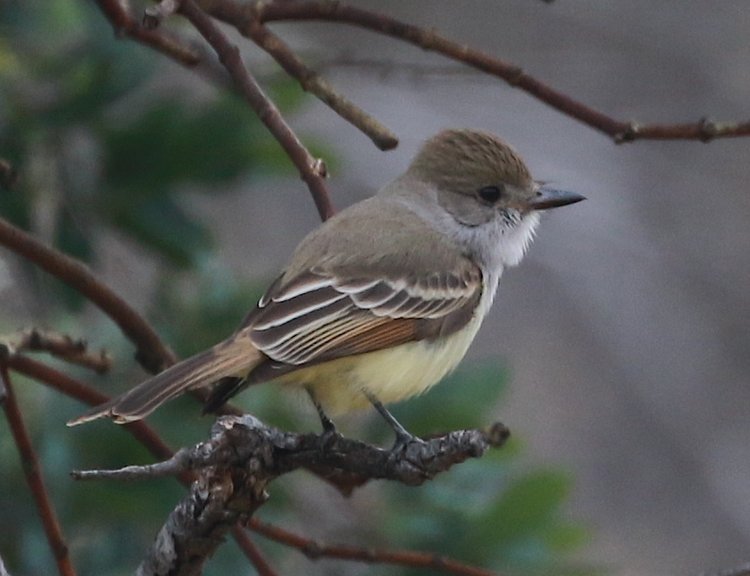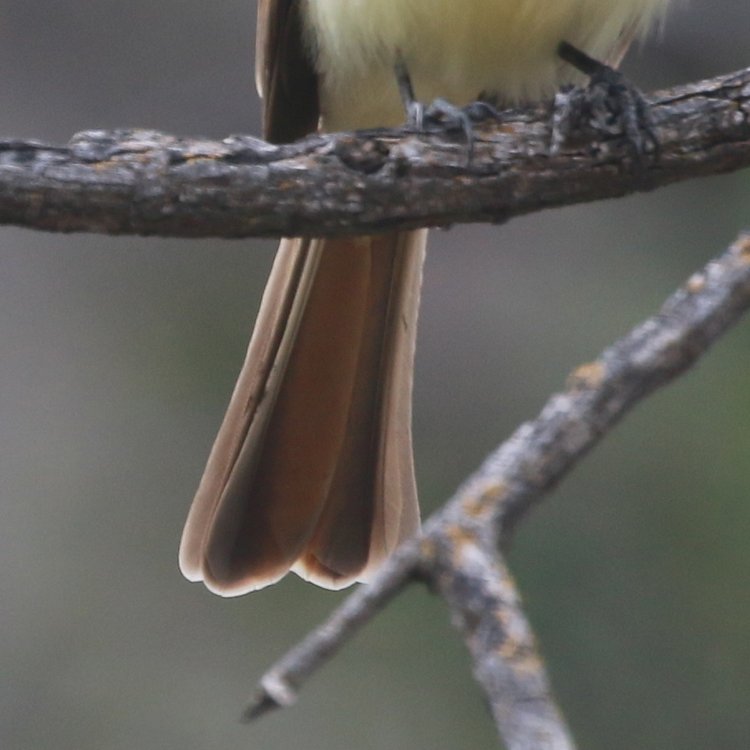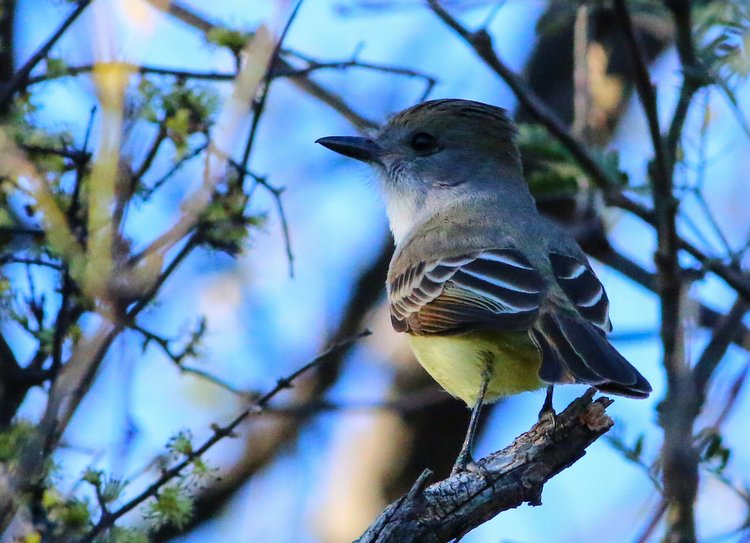 |
 |
|||||||||||||||||||||
|
||||||||||||||||||||||
Nutting's Flycatcher (Myiarchus nuttingi), Lower California Gulch, Santa Cruz County
This Nutting's Flycatcher was
found by Dave Stejskal and Thomas Staudt and
photographed by Dave Stejskal on 02 January and photographed by
Chris McCreedy on 08 January 2017.
Nutting's Flycatcher has been a scarce resident and breeder
on the lower Bill Williams River since at least Dec. 2011 (more likely since 2008, when it was first documented there). Aside from those recent records, there were only two prior documented records from the rest of the state (Roosevelt, 1952; Patagonia Lake, 1997). Outside of Arizona within the U.S., this species has been documented once in s. California at Irvine (2000) and once at Big Bend NP, Texas (2011).
It is quite common a short distance south of the Arizona
border in Sonora.
Myiarchus
flycatchers can be terribly confusing, even to
experienced birders. An excellent identifying
feature visible in these photos is the bill shape. Bills
of Myiarchus flycatchers differ in length and
depth, useful with experience. The bill of Nutting's is
shorter and stouter than that of Ash-throated. Also very
useful is the pattern of the secondaries, with rusty-tinged edges to the
outer secondaries fading to yellowish edges on the inner
secondaries on the folded wing. While Ash-throated can
show rusty/yellow secondary edging, it typically doesn't fade from the
outer to the inner secondaries as in Nutting's. One of the most frequently cited
ID marks for Nutting's has been the bright orange mouth lining of this species when compared with Ash-throated, which often shows a bright pinkish-orange mouth lining. Unless you've looked at a lot of
Myiarchus mouths in the field or in the hand, it's not a very useful character. What is more useful on Nutting's
at this time of year, especially when compared with Ash-throated, is that Nutting's is a much brighter bird overall, with a very bright yellow belly, richer brown on the head, face, and back. The undertail pattern is also
cited often, but can only be used as a supporting
characteristic. Like most Myiarchus, the outermost tail feather in Nutting's has blackish extending down what is otherwise a mostly bright rufous feather from the base to the tip on either side of the feather shaft. At the tip of the feather, the blackish widens out, but not enough to encompass the entire tip of the feather.
Adult Ash-throated has a similar pattern, but the blackish at the tip
encompasses the entire tip and even recurving upward along the outer edge of the inner web of the feather.
However, the tail of juvenile Ash-throated Flycatcher,
which is often retained into the winter, shows a similar
pattern. Voice is the best way to identify Myiarchus flycatchers, with Nutting's giving a variety of calls but often uttering an explosive and piercing 'Wheep!' that is never given by the similar Ash-throated.




02 January 2017, photo by Dave Stejskal

08 January 2017, photo by Chris McCreedy
All photos are copyrighted© by photographerSubmitted on 05 January 2017
|
©2005
|
HOME | | | REPORT SIGHTINGS | | | PHOTOS | | | BIRDING | | | JOURNAL | | | ABOUT US | | | CHECKLISTS | | | AZ BIRD COMMITTEE | | | EVENTS | | | LINKS |